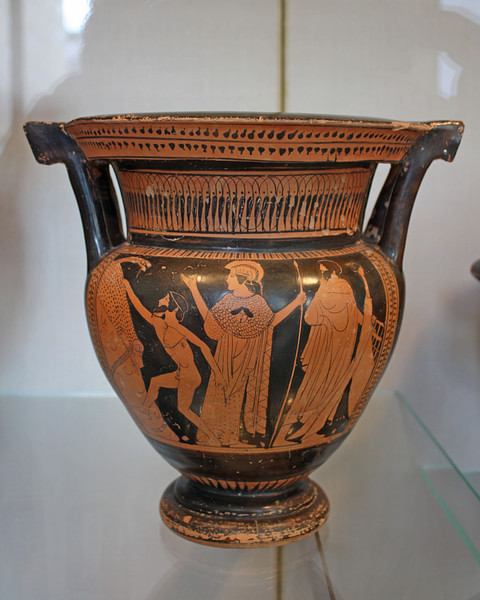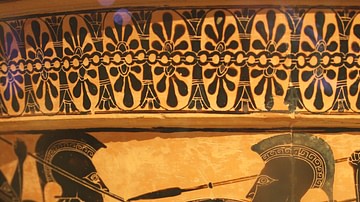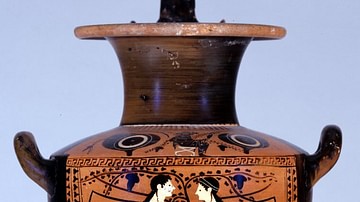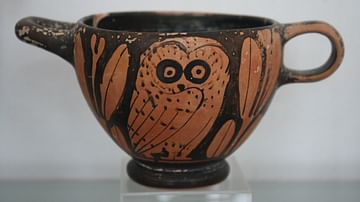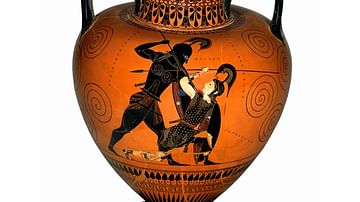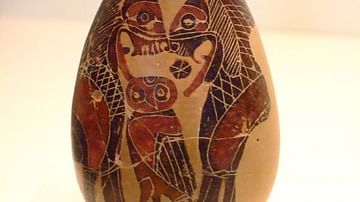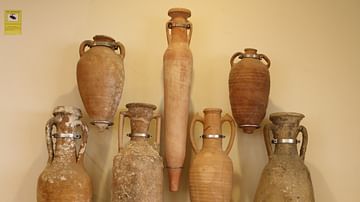The system of names used today for Greek vases has quite rightly been described by one leading scholar as 'chaotic'. Many of the names were first applied in the eighteenth and nineteenth centuries by scholars who tried to fit the names of pots that they knew from Greek and Latin literature or inscriptions to the pieces then surfacing from excavations. More recent studies of inscriptions on the actual pots have brought some of the correct names to light, and it is becoming increasingly clear that very few of the names used today were used in antiquity. However, the present system is so widespread that it would be very difficult to sweep it away and replace it with something more logical.
Many pots fulfilled a range of functions, being used in both domestic and ceremonial or religious contexts. Clay, cheap and plentiful in many parts of ancient Greece, was the basic raw material for most containers. At most times the wealthy would have drunk from gold and silver cups, but practically all households would have been well supplied with a range of clay vessels, both coarse and fine. These would have been used for storage, cooking and for the table.
The basic shape of a vase can often provide clues to its function. The open form of broad, shallow cups or large wine bowls (kraters), suggests easy access for hands or implements, for drinking, dipping or mixing. Small closed shapes with narrow mouths, such as lekythoi, are more likely to have contained something that was sealed up with wax or a stopper, and they might have been used for storage. The two horizontal handles of the water-jar (hydria) must have been essential for lifting the vessel when it was full and needed to be transported on someone's head, while the single vertical handle would have been used for pouring or for carrying the pot when empty.
Scenes on pottery may also illustrate the way the vases were used. Cups, bowls, jugs and wine coolers are shown in use at drinking parties, hydriai in fountain house scenes; small aryballoi, holding the perfumed oil that athletes rubbed on themselves after exercise, appear in scenes of the gymnasium. Very often the same vases that were used in these domestic contexts could also be dedicated in sanctuaries or laid in the tomb; but there were also individual shapes, such as the lekythos, that were particularly favoured for special purposes, in this case as funeral offerings.
